Cervical Disc Replacement
The problem: The spine is made up of similar repeating units, like links in a chain. When the cervical spine moves forward (flexion) or backward (extension), each joint contributes a small part to the total movement of the head.
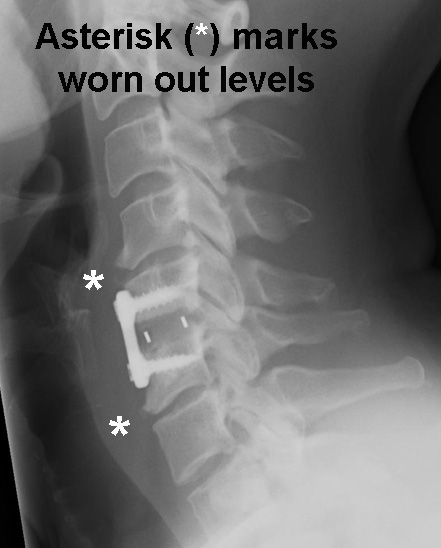
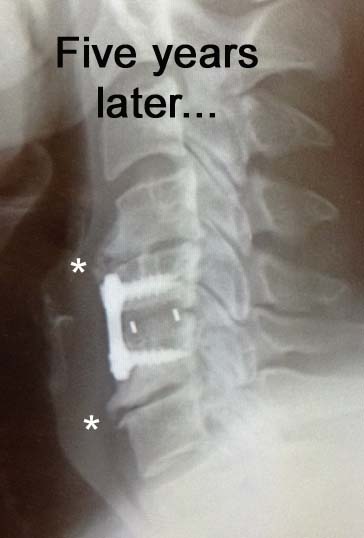
When a disc goes bad through either degeneration or injury, the most common surgical treatment is to fuse together the bones above and below that disc. While fusion is the appropriate procedure in many cases, one consequence of fusion is that the joint above and below have more stress and are at risk of wearing out.
In this xray, the disc spaces at the ends of the fusion (at the ends of the plate) are narrow, and bone spurs are forming on the front of the spine.
For a short video of cervical motion next to a fusion, click here.
One solution: Recently approved by the FDA, an option for selected cases is replacement of the cervical disc instead of fusing it. This treatment, which is done through the same approach to the cervical spine, allows for maintenance of motion at that particular segment, with theoretically less risk of wearing out the neighboring joints!!
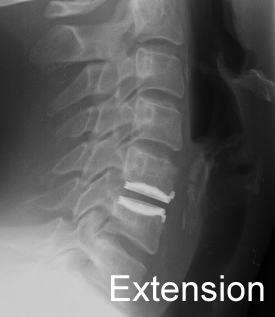
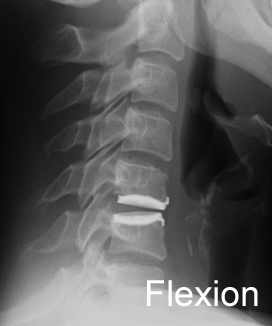
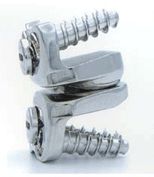


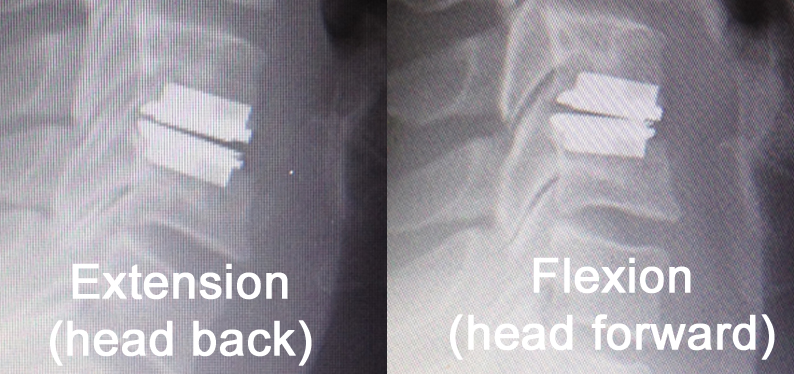
By the way, I was the first trained in this technique in Albany, GA!!
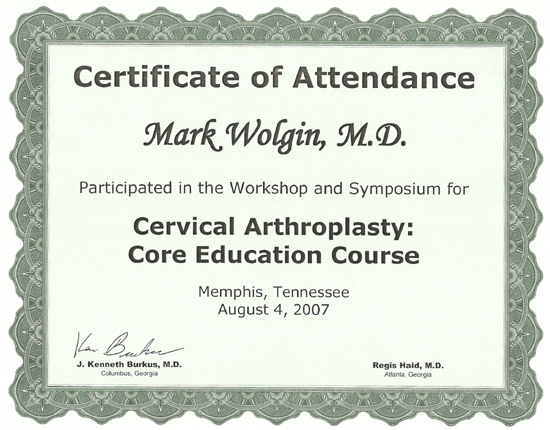
If you are interested in learning more, call for an appointment, 229-883-4707.
For a video about the Medtronic Prestige disc replacement, click here.
For a video about the Synthes disc replacement, click here.
For a video about the Medtronic Bryan disc replacement, click here.
The appropriate indications are for patients with problems at one level with current FDA approval.
